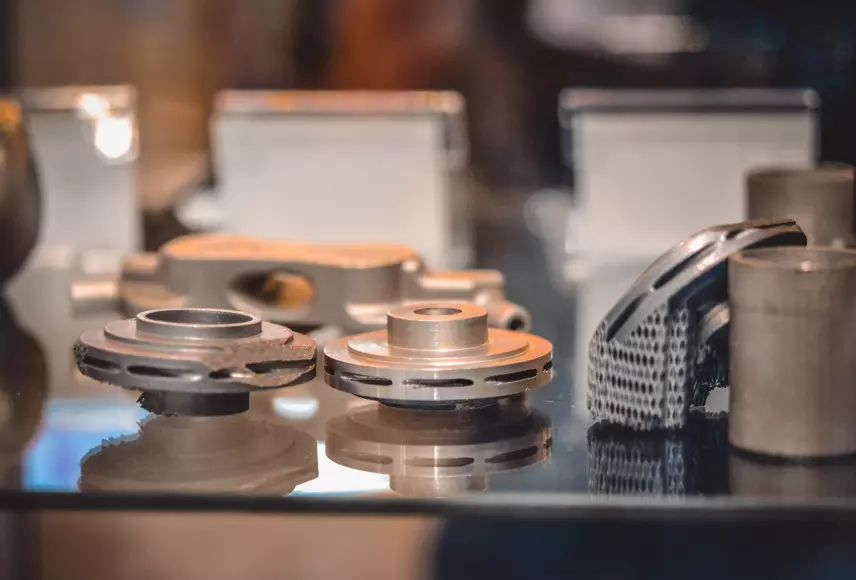- [email protected]
- 00974-50540047

The global manufacturing industry faces a clear challenge: innovate faster while shrinking its environmental footprint. Additive manufacturing (AM) is uniquely positioned to help - especially when we feed it with recycled materials in both polymers and metals. By turning scrap, failed builds, and post-consumer waste into new feedstocks, AM doesn’t just reduce waste; it lowers material cost, shortens supply chains, and pushes us closer to a practical circular economy.
Conventional manufacturing often generates significant waste during subtractive processes. In contrast, 3D printing produces near-net-shape parts with minimal excess material. When recycled feedstocks are introduced, the benefits multiply; diverting industrial scrap and post-consumer waste from landfills while creating high-value products. The best part? This can be done without compromising on functional performance when materials are selected, qualified, and processed correctly.
3D printing of recycled polymers has seen many use cases in recent years. For example, Piocreat3D demonstrates how post-consumer PET bottles are transformed into filament for FDM printing, offering mechanical performance comparable to virgin polymers while cutting raw material costs (Piocreat3D, 2024). Similarly, in the metals sector, MetalTech News reports on innovative powder atomization processes that recycle titanium and aluminum scrap into powders suitable for AM processes. Continuum’s recycled nickel-based superalloy is one such real-world use case scenario where a 100% recycled powder was qualified to be used by experts for desktop binder jet 3D printing platforms. (Continuum, 2024). In a time where manufacturers are being scrutinized for the environmental impact of their solutions, recycled materials are seeing a rising use in industries, especially when coupled with AM processes.
Automotive manufacturers are increasingly using recycled ABS and PETG to produce jigs, fixtures, and functional prototypes. Published data in ScienceDirect shows that certain recycled blends retain over 90% of tensile strength compared to virgin materials, hence being viable alternatives to new filament. As such, companies like Ford have enhanced their efforts towards green 3D printing, as they manufacture select car partsfrom recycled polymers.
The printability/usability of recycled metal powders depends on several factors, such as powder contamination, powder particle size distribution, and mechanical properties retention, all of which are connected to the number of recycling cycles the material goes through. However, recent research has proven it possible for parts produced from recycled metals to achieve comparable properties to those made from virgin powders. Even though industries like Aerospace have strict requirements, recycled metal powders are increasingly viable when we control the right variables. Printability and part performance depend on powder cleanliness, particle size distribution stability, flowability, and oxygen/nitrogen pickup across reuse cycles. With proper reclamation, dynamic sieving, and powder health monitoring, recycled titanium and aluminum powders can produce parts with properties comparable to virgin material.
At first, 3D printed metal parts were only reserved for low criticality aerospace applications (such as bezels, housings, and fuel nozzles) due to the risk of unpredictable anomalies accompanying the laser-based metal 3D printing process (LPBF). However, this is where software such as Paanduv’s proprietary “AM Pravah” has stepped in, allowing users to fully simulate the LPBF process and predict anomalies and defects (porosity hot spots, keyholing, lack-of-fusion) before they occur- thus opening the door to high criticality applications as well. Read more about thishere.
Even the electronics industry is working towards sustainability, and 3D printing plays a key role in this. A collaboration between the University of Maryland, Georgia Tech, and the University of Notre Dame created a new 3D printing method to develop a fully recyclable PCB printed using PVA and liquid metal, which dissolves in water to separate materials (especially liquid metal) for reuse (Via ResearchGate).
1. Material Collection & Sorting
Polymers: Collected from post-industrial or post-consumer waste streams (e.g., PET bottles, failed prints, automotive plastic scraps).
Metals: Acquired from machining offcuts, end-of-life components, or failed LPBF builds.
2. Material Processing
Polymers: Shredded and pelletized; impurities removed before extrusion into filament or pellets for direct pellet-fed printers.
Metals: Cleaned, melted, and re-atomized into powder via gas or plasma atomization (CMM Metals). More advanced processing techniques for recycled metals are also used such as:
o Dynamic Sieving to remove oversized and unwanted particles
o Plasma Spherodization to reshape irregular particles into spherical ones
3. Feedstock Qualification
Rheological and particle size distribution testing formetal powders; melt flow index testing for polymers to ensure printability.
4. Printing & Post-Processing
Polymers printed using FDM, SLS, or pellet-fed extrusion; metals printed using LPBF, DED, or binder jetting.
Heat treatment, surface finishing, or infiltration processes restore or enhance mechanical performance.
5. Quality Assurance
Mechanical testing (tensile, impact, and hardness), microstructural analysis, and dimensional inspection to validate part performance.
Integrating recycled metals and polymers into 3D printing workflows is no longer a niche experiment; rather, it’s becoming a viable production method. With companies and research groups proving the feasibility of high-quality, recycled feedstocks, industries from aerospace to medical devices are beginning to adopt these methods at scale.
For manufacturers, the incentive is clear: reduce costs, meet sustainability goals, and enhance brand value - all while pushing the boundaries of what additive manufacturing can achieve.
Contact us at #AddiSol to learn more about Polymer and Metal recycling machines.
#Recycled Metals # Recycled Polymers # 3D Printing # AddiSol